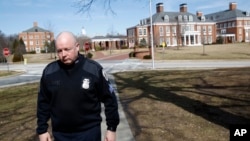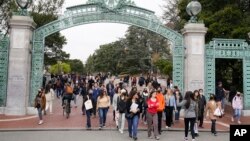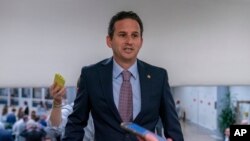Student Union
Our Commenters Explain Why Americans Can't Go Anywhere Without a Bottle of Water
Well, our intrepid commenters jumped in to offer explanations for the bottled water phenomenon.
Commenter Paul pointed out that bottled water hasn't always been so common:
I grew up in the middle of the last century in L.A. [Los Angeles]. I remember being surprised that immigrants from Mexico and Latin America carried bottled water, even as they sold oranges on the street corner. I remember a ridiculous feeling like: WTF, our tap water is not good enough for them? Back then only the pretentious and celebrities conspicuously consumed bottled water.
Megan added:
[Carrying bottled water] wasn’t common when I was in college, but it’s normal now. The culture has shifted — wish I knew why!
“Thumper” suggested one explanation for the growth in popularity of bottled water:
The populace carries water everywhere because of the effectiveness of media advertising. When bottled water first appeared, I found it incredible that people would buy what they can get free out of a faucet. Now people pay more for water than for gasoline without a complaint.
While B. Fulton offered this explanation:
Carrying water everywhere is the next, lowest calorie, step in a long progression for people who carried soda cans everywhere. First, they carried full test soda; then, when they noticed that they had started to look like blimps, they carried artificially sweetened soda. Sipping filtered water all day long is probably much better than chugging can after can of sugar water which is a carbonated aqueous solution of industrial dyes, flavors, and sweeteners.
Are there any American behaviors that you’ve found particularly surprising or unusual? Tell us about it below or in the comments!
See all News Updates of the Day
Universities in Middle East building research relationships with China

As China bolsters research relationships with universities in the Middle East, the United States has taken notice – especially when that research involves artificial intelligence.
Reporting for University World News, Yojana Sharma has the story. (March 2024)
Tips for staying safe while studying in the US

Recent news events have raised safety concerns among some international students studying in the United States.
Adarsh Khandelwal, writing in the India Times, has tips for staying safe from the moment you arrive until the day you complete your studies. (March 2024)
Some colleges are making digital literacy classes mandatory

A 2019 study by Stanford found that most college students can’t tell the difference between real and fake news articles. Amid rampant online disinformation, and the threat of AI-generated images, some schools are making students learn “digital literacy” to graduate.
Lauren Coffeey reports for Inside Higher Ed. (March 2024)
With federal student aid delays, students aren’t sure what college will cost

The U.S. Department of Education’s federal student aid form (FAFSA) experienced serious glitches and delays this year.
Now, many students have been admitted to college, but don’t know how much money they’ll need to attend.
Read the story from Susan Svrluga and Danielle Douglas-Gabriel for The Washington Post. (March 2024)
Senator draws attention to universities that haven’t returned remains

More than 70 U.S. universities continue to hold human remains taken from Native American burial sites, although those remains were supposed to be returned 30 years ago.
Jennifer Bendery writes in Huffington Post that one senator has been using his position in an attempt to shame universities into returning remains and artifacts. (April 2024)







